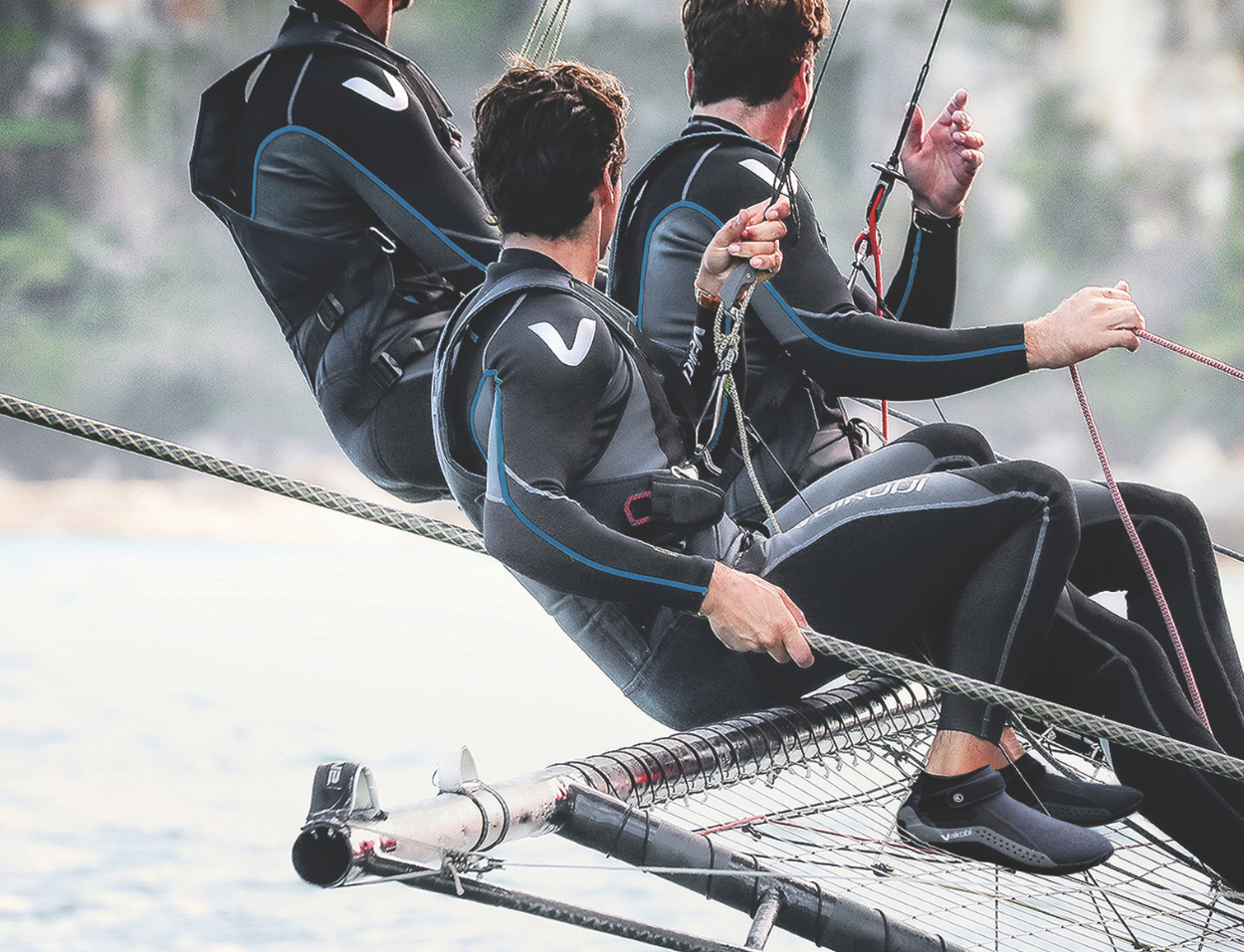When it comes to what to wear dinghy sailing, neoprene is still the go-to material sailors choose for its flexibility, comfort and warmth. The most innovative sailing and surfing brands use engineered panel shapes and combine varying thicknesses of neoprene to make wetsuits you can move well in. This is a huge leap forward from the stiff and hot wetsuits of old, and important to know if you’re trying to understand what wetsuit thickness I need for dinghy sailing.
The benefits of wearing a wetsuit when sailing
Most small sailing boats have sharp wires, rough ropes, and slippery decks that can affect your fun factor if you’re new to the sport! A wetsuit is an ideal choice when it comes to sailing, as it helps to regulate core temperature and protect against water abrasions, sunburn and jellyfish stings. Wetsuits can also provide extra buoyancy, which can be beneficial when dinghy sailing. By wearing a wetsuit with the right thickness, you can ensure that you are comfortable while participating in this popular sport.
How to choose the right thickness wetsuit for dinghy sailing
We believe the key to picking the right wetsuit thickness for sailing is understanding the different types of neoprene. Neoprene is a kind of synthetic rubber material, normally made up of three layers; a nylon or lycra outer layer, a closed cell foam core, and then a soft lining. The wetsuit name and care label will tell you the thickness of these layers (total) in millimeters.
The thicker the neoprene the warmer you will be while sailing, the more buoyant you will be if you end up in the water, however thick wetsuits offer less flexibility. Wetsuits for surfers usually range in thickness between 2mm and 7mm, while sailing wetsuits (because you’re not immersed in water all the time) tend to be 1.5mm - 4mm thickness.
Long John/ Long Jane shaped Wetsuits are popular with dinghy sailors because they keep the mid section covered and warm, while leaving the shoulders completely free to move. Quite often a UV rash top or thermal top for sailing is worn underneath.
A relatively new wetsuit product is the long sleeve wetsuit top. This gives dinghy sailors the flexibility to wear a light rashie on top in Summer, and wear the wetsuit top for cold conditions, while they wear the same sailing pants year round. Making your sailing wardrobe go further across more conditions is a great idea to get maximum enjoyment year round. All of these options are great choices for the best clothes for sailing.
Pro sailors will tell you that for your core, you’ll want a thicker neoprene with a high level of insulation, and thinner neoprene for your extremities such as arms and legs. This will provide you with the necessary flexibility for the motions you will be performing when sailing. It's also worth considering investing in a pair of sailing boots and gloves for extra protection from the elements.
The best clothes for sailing include garments that keep you warm, dry, and free to move while out on the water. Vaikobi’s FlexForce range of wetsuits are designed to do just that - they are lightweight, offer superior stretch, breathability and durability and are available in a range of thicknesses to meet all types of weather conditions.
So when choosing what to wear sailing, ensure you choose the right wetsuit thickness depending on where your body needs more or less flexibility, so that you can enjoy your time out on the water!

